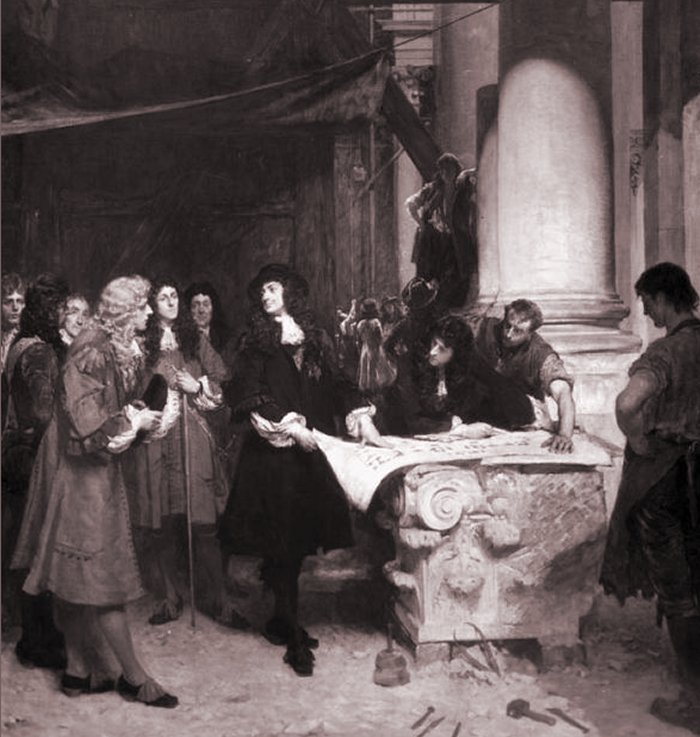Sir Christopher Wren – Genius Mind Of Most Influential British Architect Of All Time
A. Sutherland - AncientPages.com - Christopher Wren (1632-1723) was a man of considerable scientific abilities. He was regarded as the most influential British architect of all time.
Wren was born in 1632, in East Knoyle, Wiltshire, England. He showed an early talent for mathematics and enjoyed inventing things. At the age of 13, he invented an astronomical instrument, a pneumatic engine and an instrument for writing in the dark.

He dominated English architecture for 50 years. His most impressive work is St. Paul's Cathedral, London.
While at Oxford, he had plans for an instrument to measure angles, a “weather wheel”, a weather clock, an instrument to write double, a surveying instrument, and a new engine to raise water.
He developed a micrometer, attached telescopic sights to telescopes and developed a double-hinged telescope for measuring angles.
In 1657, Wren was appointed professor of astronomy at Gresham College in London and four years later, professor of astronomy at Oxford.
He focused on astronomy, physics, and anatomy. He experimented with submarine design, road paving, and design of telescopes and was the greatest English architect of his time.

At Oxford in the spring of 1666, he made his first design for a dome for St. Paul’s. It was accepted in principle on August 27, 1666. One week later, however, London was on fire. The Great Fire of London reduced two-thirds of the City to a smoking desert and old St. Paul’s Cathedral to a ruin.
At the age of 25, Wren was offered the Chair of Astronomy at Gresham College, London. Wren mapped the burned city of London and was given the responsibility for replacing the 87 parish churches demolished by the Great Fire of London in September 2, 1666.
Wren did not turn to architecture until 1663, when he designed the Pembroke College Chapel at Cambridge University.
Between 1670 and 1686 he designed 51 new churches including St. Paul's Cathedral, the largest cathedral in England, which is Wren's masterpiece. He also prepared designs of many other secular buildings. They constitute a major part of the vast amount of work done by him and are known as the City Churches.
Wren was a founder of the Royal Society (president 1680-82), and his scientific work was highly regarded by Sir Isaac Newton and Blaise Pascal. He was knighted in 1673.
Among his inventions, there are also: a machine to plant grain and a hothouse to grow tropical plants, a way of disinfecting sick rooms. He devoted his time to experiments with road paving and submarine design.
Wren was sixty-six years old when he finished St. Paul's. Other buildings designed by Wren included the Royal Exchange, College of Physicians, the Royal Naval College, Custom House and the Drury Lane Theatre. Chelsea Hospital. In 1682, Wren designed a Royal Hospital for soldiers at Chelsea.
When Christopher Wren died in 1723 at the age of 90, he became the first person to be buried in St. Paul's Cathedral. His tomb bears a simple inscription:
"Reader, if you seek his monument, look about you."
Written by – A. Sutherland - AncientPages.com Senior Staff Writer
Copyright © AncientPages.com All rights reserved. This material may not be published, broadcast, rewritten or redistributed in whole or part without the express written permission of AncientPages.com
Expand for referencesMore From Ancient Pages
-
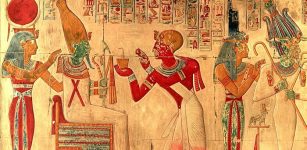 Osiris: Enigmatic And Powerful God In Ancient Egypt
Egyptian Mythology | Jun 13, 2017
Osiris: Enigmatic And Powerful God In Ancient Egypt
Egyptian Mythology | Jun 13, 2017 -
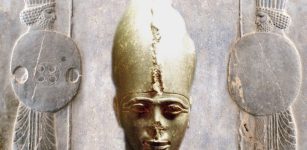 Pharaoh Psamtik III’s Deadly Encounter With Cambyses II Of Persia Ended The 26th Dynasty Of Egypt
Featured Stories | Apr 16, 2021
Pharaoh Psamtik III’s Deadly Encounter With Cambyses II Of Persia Ended The 26th Dynasty Of Egypt
Featured Stories | Apr 16, 2021 -
 First Roman Military Amphitheater Unearthed Near Megiddo
Archaeology | Jun 1, 2022
First Roman Military Amphitheater Unearthed Near Megiddo
Archaeology | Jun 1, 2022 -
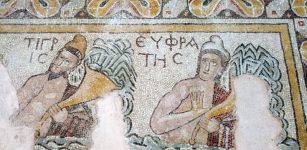 More Beautiful Mosaics In The Ancient City Of Hadrianopolis In Northern Turkey
Archaeology | Sep 28, 2022
More Beautiful Mosaics In The Ancient City Of Hadrianopolis In Northern Turkey
Archaeology | Sep 28, 2022 -
 Surprising Discovery – Replica In The Field Museum Is A 3,000-Year-Old Sword
Artifacts | Jan 18, 2023
Surprising Discovery – Replica In The Field Museum Is A 3,000-Year-Old Sword
Artifacts | Jan 18, 2023 -
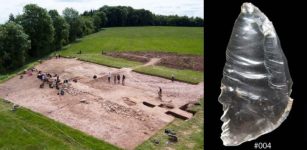 Prehistoric Brits Used Rare Rock Crystals To Mark Burial Sites – New Study
Archaeology | Aug 10, 2022
Prehistoric Brits Used Rare Rock Crystals To Mark Burial Sites – New Study
Archaeology | Aug 10, 2022 -
 Indus Civilization And Complex Patterns Of Urbanity – New Study
Archaeology | Feb 21, 2022
Indus Civilization And Complex Patterns Of Urbanity – New Study
Archaeology | Feb 21, 2022 -
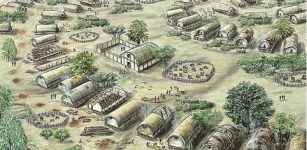 6,000 Years Ago, Europe’s Oldest Cities Relied On Fertilizer And Plant Protein, Isotope – Analysis Shows
Archaeology | Dec 19, 2023
6,000 Years Ago, Europe’s Oldest Cities Relied On Fertilizer And Plant Protein, Isotope – Analysis Shows
Archaeology | Dec 19, 2023 -
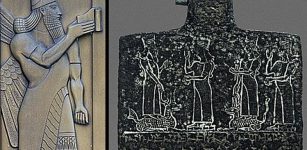 Mesopotamian God Nabu Inscribed The Human Fates Determined By The Gods
Featured Stories | Aug 7, 2018
Mesopotamian God Nabu Inscribed The Human Fates Determined By The Gods
Featured Stories | Aug 7, 2018 -
 What Is The Avoidance Custom Of The Amish People In Pennsylvania?
Ancient History Facts | Jul 29, 2019
What Is The Avoidance Custom Of The Amish People In Pennsylvania?
Ancient History Facts | Jul 29, 2019 -
 Ancient DNA Reveals: Iberian Males Were Almost Completely Replaced Between 4,500 And 4,000 Years Ago
Archaeology | Mar 15, 2019
Ancient DNA Reveals: Iberian Males Were Almost Completely Replaced Between 4,500 And 4,000 Years Ago
Archaeology | Mar 15, 2019 -
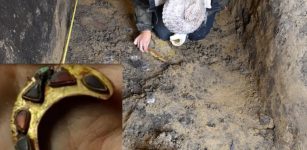 A Warrior’s Princely Tomb With Artifacts Unearthed In Romania
Archaeology | Dec 27, 2022
A Warrior’s Princely Tomb With Artifacts Unearthed In Romania
Archaeology | Dec 27, 2022 -
 Book Of Kells: Illuminated Medieval Manuscript From Monastery On Iona, Scotland
Artifacts | Feb 8, 2018
Book Of Kells: Illuminated Medieval Manuscript From Monastery On Iona, Scotland
Artifacts | Feb 8, 2018 -
 The Enigma Of The ‘Ancient Ones’, The Anasazi Cliff-Dwellers Of The Southwestern United States
Civilizations | Apr 9, 2017
The Enigma Of The ‘Ancient Ones’, The Anasazi Cliff-Dwellers Of The Southwestern United States
Civilizations | Apr 9, 2017 -
 We Need To Look Underwater To Understand Our Past – New Study
Archaeology | Apr 14, 2023
We Need To Look Underwater To Understand Our Past – New Study
Archaeology | Apr 14, 2023 -
 Mysterious Ancestor Of All Mammals Identified Through Genome Reconstruction
Archaeology | Sep 30, 2022
Mysterious Ancestor Of All Mammals Identified Through Genome Reconstruction
Archaeology | Sep 30, 2022 -
 Selene – Greek Goddess Of The Moon And Myth About Love, Jealousy And Punishment
Featured Stories | Jan 24, 2019
Selene – Greek Goddess Of The Moon And Myth About Love, Jealousy And Punishment
Featured Stories | Jan 24, 2019 -
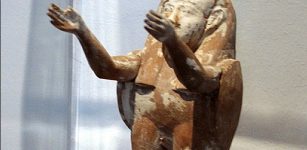 Ancient Beliefs About The Soul
Civilizations | Mar 8, 2016
Ancient Beliefs About The Soul
Civilizations | Mar 8, 2016 -
 Controversial Artifacts No One Wants To Examine Thoroughly: Is There Something We Are Afraid Of Discovering?
Ancient Technology | May 22, 2019
Controversial Artifacts No One Wants To Examine Thoroughly: Is There Something We Are Afraid Of Discovering?
Ancient Technology | May 22, 2019 -
 Mysterious Runes Deciphered By School Children In Sweden Shed New Light On The Kensington Stone
Artifacts | Oct 4, 2019
Mysterious Runes Deciphered By School Children In Sweden Shed New Light On The Kensington Stone
Artifacts | Oct 4, 2019

